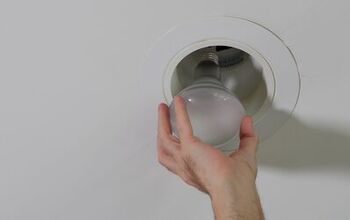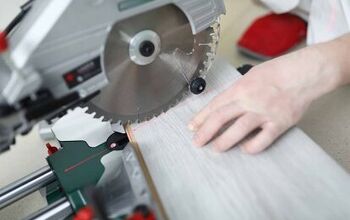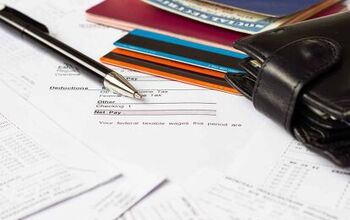Why Is Detergent Leaving Residue On My Clothes (And How To Stop)

Washing your clothes is easier than ever with modern washing machines. There are endless settings that make it possible to wash just about any material however you’d like. With all this customization and ease, it can be shocking and annoying when you find your clothes covered in detergent residue when you take them out of the washer.
Detergent residue left after washing clothes is often caused by using too much detergent or the wrong kind of detergent for the machine. The residue could also be caused by fabric softener, the washing setting, or even the temperature of the water. A clogged dispenser or dirty machine can also cause this problem, as can an overloaded washer or an old machine that needs repair.
If you keep noticing detergent residue on your clothing when you take it out of the washer, you’ll want to fix this problem immediately. This residue forces you to rewash clothes, which costs money and takes a lot of extra time. Luckily, there are only so many possible problems that can cause this issue, and they are listed (with solutions) in this article below.
10 Reasons There’s A Residue On Clothes After Washing Them (And How To Fix)
1. You’re Using Too Much Detergent
The number one reason why clothes contain detergent residue when you take them out of the wash is that you used too much detergent. If you use double the amount of detergent you should, it can be hard or impossible to remove all the soap from the water before the cycle completes.
This is an especially easy mistake to make nowadays, as many detergents sold in stores are concentrated. This means they are two or three times more potent than normal detergents.
How to Fix: Read the label on your detergent carefully. Never eyeball how much detergent you need. Always properly measure your detergent liquid or powder before adding it to the machine.
2. Using The Wrong Type Of Detergent
Another possibility is that you are using the wrong type of detergent for the machine. Some machines don't take well to powdered detergent, for example. Certain wash cycles prefer certain types of laundry detergent.
How to Fix: Ensure you know what type of detergent to use for your machine. Read the instruction manual carefully. Also, ensure you read the usage label on a new detergent before you buy it.
3. You’re Putting Detergent In The Wrong Place
New washing machines can have up to four locations to put detergents, fabric softener, and bleach. This can become confusing, and it can cause some mistakes. These mistakes can result in you putting detergent in the wrong compartment. Or you may decide to sprinkle the detergent directly on the clothes instead, which you shouldn’t do in some machines. This can lead to residue on your clothes.
How to Fix: To ensure you don’t put your detergent in the machine incorrectly, you must know which compartment is which. If you have trouble remembering, make a simple photo map and display it near the washer.
This will help ensure detergent goes in the right dispenser, which is good for both your machine and your clothes.
4. The Washer Is Overloaded
Another reason why your clothes can come out with residue and detergent stains on them is that you have overloaded the washer. If you put too much clothing in the washing machine, it is hard for water to circulate and clean the clothing.
When water can’t circulate through each garment and move your clothes around easily, rinsing becomes compromised. In turn, detergent can get trapped in certain garments and will remain even after several rinse cycles.
How to Fix: Don’t overload your washer. Know the limits of your machine, and don’t push them. This will prevent your clothes from coming out with detergent residue. It will also help your machine last longer, as overloading it can cause unnecessary strain on the washer.
5. The Machine’s Dispenser Is Clogged
Over time, your washing machine’s detergent dispenser can become clogged. This is particularly true if you use powdered detergent. If you notice caked-up detergent and a narrower hole than usual where you add your detergent, then this could be the problem.
Sometimes clogged dispensers release detergent at abnormal rates. Sometimes not enough, and at other times way too much.
How to Fix: If you notice your detergent dispenser is clogged, you must unclog it. Clear the area and flush it. Use the manual to learn the best way to do this with your specific machine.
6. Fabric Softener Is To Blame
Just as too much detergent can leave residue on your clothes, so can fabric softener. You might think that the more fabric softener you use, the softer your fabric will be, but at a certain point, fabric softener does more harm than good.
It can leave the same soapy texture on clothes, and even leave soapy lines on your fabrics if you add way too much to a load of laundry.
How to Fix: Use fabric softener as directed. Never put extra softener in a load of laundry. Check if your fabric softener is concentrated, as this means you may need to use less than you’re used to.
7. The Water Temperature Is To Blame
If you always wash your clothes using cold water, then the water temperature could be causing the detergent residue. If water is especially cold, then it may difficult for it mix with and dilute your powdered detergent.
In turn, the powder will remain clumpy and then partial powder will form throughout the washing cycle. When you remove your clothes, you may then see traces of the powder on your clothes, since it never dissolved.
How To Fix: Two easy fixes to this problem are you either wash clothes at a warmer temperature or switch to a liquid detergent. Alternatively, you can dissolve the powder before you add it to your laundry. Use a small amount of hot water and mix the measured detergent in a cup until it dissolves. Then add it to your machine.
8. Your Washing Machine Is Old
If your washer is really old, then there’s a chance its age is starting to catch up with it. Over time, a washer loses its ability to properly rinse and remove water (and soap) from clothes. If you haven’t changed anything in the way you wash clothes, but have an old washer, then this might be your problem. This is particularly true if you notice your washer is not spinning or draining properly.
How to Fix: Try to fix whatever problem is persisting with your machine, or call in a professional. Alternatively, you might want to consider buying a new machine. New energy-saving washers can save you money over time.
9. You’re Using Too Short A Wash Setting
Sometimes you want to get your clothing washed quickly. To do this, you likely use the quickest wash setting your washer has. This might wash clothes fast, but it might not rinse them as many times or as thoroughly as a longer wash cycle. If the problem seems to happen more often when you use a quick setting, then this could be your problem.
How to Fix: Use the quick wash setting less, or use less detergent when using a faster setting. You can also try diluting the detergent before putting it in the machine.
10. The Washer Needs To Be Cleaned
Lastly, there’s a chance that your washing machine is dirty and it needs to be cleaned. The residue might be coming from dirty parts of the machine, or the buildup might affect how well the water drains.
Washing machines should be cleaned once every month or so, or at least once every thirty cycles of laundry.
How to Fix: If you haven’t cleaned your machine in a while, the best way to fix this issue is to clean it thoroughly.
Summing Up Why Detergent Is Leaving A Residue On Clothes
Washing machines are supposed to clean your clothes. So, if you notice a soapy residue on your garments after you wash them, you’ll want to find the source of the problem and fix it right away. The main cause of this soapy residue is using too much soap or fabric softener, or the wrong kind. Cold water can make it hard to dissolve powdered detergent, and if your washer is dirty or the detergent dispenser is clogged, it can leave your clean clothes soapy.
Related Guides:
- Why Do Towels Smell After Washing?
- Washing Machine Drain Overflows? (Here's a Fix)
- Why Is There Water in My Washing Machine Drum When It Is Not in Use?

Tom Gaffey is an expert writer who currently resides in Washington D.C. Tom has a passion for real estate and home improvement writing, as well as travel and lifestyle writing. He lived the last twelve years in Hawaii where he worked closely with luxury resorts and event planners, mastering his knowledge of aesthetics and luxury products. This is where he found his passion for home improvement and a keen interest in DIY projects. Currently, Tom resides in Washington D.C, and also working on his debut fiction novel.
More by Tom Gaffey

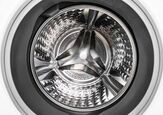











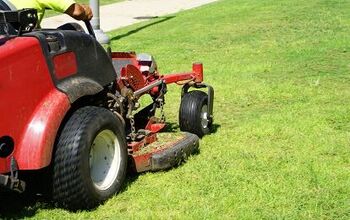
![The 5 Best Angle Grinders – [2022 Reviews & Buyer's Guide]](https://cdn-fastly.upgradedhome.com/media/2023/07/31/9071326/the-5-best-angle-grinders-2022-reviews-buyer-s-guide.jpg?size=350x220)

